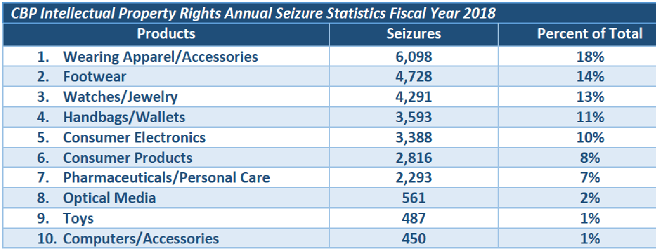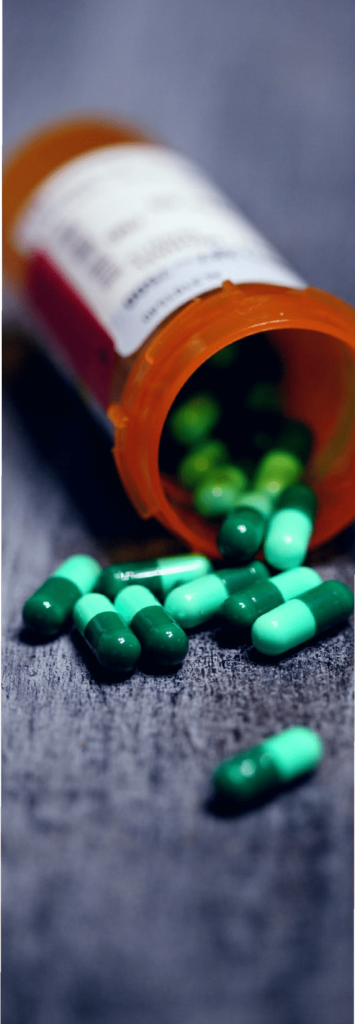
The Bigger They Are…
How hard are you willing to fall for your product’s fakes?
The cost of counterfeits is more than monetary. Not only do counterfeits hit you in the pocketbook, they can be harmful to your company’s reputation, and even endanger consumers. The Department of Homeland Security similarly argues that the “illicit trade” of counterfeit goods is a threat to public safety and “erodes U.S. economic competitiveness” by decreasing brand trust. Oftentimes, consumers are not aware that the product they’re receiving is counterfeit, and associate performance or safety issues with the brand itself. Additionally, the rise in ecommerce business has made it possible for counterfeiters to easily create legitimate-looking storefronts and sell their products right alongside legitimate ones. In fact, in the decade between 2005 and 2016, there was a “154 percent increase” in the number of counterfeits traded internationally.
The linkages between the rise of e-commerce and the rise of counterfeit sales cannot be dismissed, but we’ll go into the specifics of the ecommerce market in a bit. Counterfeits infiltrate a wide variety of industries. The chart below outlines the percentage of fraudulent products out of total seizures by CBP in 2018, broken down by retail category. In half of these categories, at least 1 in 10 products were deemed fake.

The government is cracking down on counterfeits, but these efforts can only go so far. A lot of emphasis is put on individual corporate responsibility to catch these fakes. Just how harmful is turning a blind eye? Let’s find out.

Trust Issues
How counterfeits are harmful
Because of the prevalence of counterfeits in the fashion and apparel sector, there’s a public misconception around the risks associated with the growing counterfeit market. According to the Anti-Counterfeiting Group, an EU Customs report published in 2018 “reveals that of all border seizures of counterfeit goods, 34% now have the potential to harm consumers. This is up from 25% in the previous year.” Unfortunately, counterfeiters are seeing profitability opportunities in markets we depend on for safety—such as car parts, airbags, bicycle helmets, and more. These products are often manufactured with faulty materials and don’t go through the rigorous testing procedures their authentic counterparts are put through.
An especially dangerous category listed on the aforementioned chart is in the personal products and pharmaceutical space. With prescription drug prices so high, and the increasing availability of prescription drugs online (like with the recently-launched Amazon Pharmacy) buyers are being tempted by lower-prices and aren’t aware of the risks at play. Pharmaceuticals and personal care products are strictly regulated, and counterfeits aren’t held to the same standards, resulting in medicine and products for personal care that are ridden with toxic substances. The beauty and skincare industry is one of the most rapidly growing industries, so counterfeiters are seeing ample opportunity there. These fake products are often produced in unsafe and uncleanly factories, with toxic materials, leading to consumer exposure to carcinogens and even bacteria like E. Coli.
Electronics and children’s toys are another area where counterfeits can pose a serious threat. The Department of Homeland security outlines some shocking statistics, highlighting the gravity of having fakes circulating in this market.
“An investigation of counterfeit iPhone adapters conducted by the GAO found a 99 percent failure rate in 400 counterfeit adapters tested for safety, fire, and shock hazards, and found that 12 of the adapters posed a risk of lethal electrocution to the user. In December 2015, CBP seized 1,378 hover boards with counterfeit batteries, which can cause fires resulting in injury or death. Children’s toys, some laced with deadly metals like cadmium and lead, represent another area in which counterfeiters have taken advantage of e-commerce business models that provide limited to no accountability for sellers.”
Department of Homeland Security
Not only are these statistics frightening, the reality of having low-quality and unsafe products for sale in the US market means the reputations of legitimate brands are at stake.
As noted by Homeland Security, the role of online marketplaces cannot be understated in this problem. While physical storefronts have “a well developed regime for licensing, monitoring, and otherwise ensuring the protections of intellectual property rights (IPR), a comparable regime is largely non-existent for international e-commerce sellers.” Homeland Security has laid out the specific problems plaguing the e-commerce space, as well as the solutions they propose businesses implement if they’re working in the e-commerce space. Let’s take a closer look.

The Limit Does Not Exist
The growth of e-commerce and the unique problems it presents
Gone are the days where counterfeits were limited to city street corners. Today, counterfeits made across the globe are expanding their reach due to ecommerce. Online platforms that allow third-party sellers, such as Amazon, have dramatically increased the possibility of counterfeit purchases because of the distance between the seller and operator of the platform. This is a huge growth area—Amazon reports third-party sales on its marketplace grew from $100 million in 1999 to $160 billion in 2018. There have also been huge increases in the last 10 years in the number of counterfeit products detained by Border Control. One factor impacting this growth? The cost of entering the online market has decreased, and it’s relatively easy to set up a seller profile on most online platforms that welcome third party sellers.
Commenters from the public sector also revealed discrepancies in regulation across platforms—some vet their sellers much more than others. Combined with the low upfront costs, and the lower costs of producing counterfeit goods, counterfeiting has become an even more profitable industry than before the growth of e-commerce.
Online counterfeit sellers will also create multiple storefronts, making it harder to shut them down. And because these goods are frequently shipped in small parcels, since there’s vastly different levels of government scrutiny for smaller shipments, they often avoid detection by government screening. Additionally, the “trust mechanisms” on online marketplaces are riddled with fake “customers”, so real consumers, who often rely on reviews to ensure they are purchasing authentic products, are not always reading reviews from other customers themselves.
The government is taking measures to limit the influx of counterfeit goods, but things still slip through the cracks. What are you doing to ensure your brand and consumers are protected? Here are the steps they recommend taking to ensure you’re safe: By and large, the best way to solve this problem is to have complete transparency throughout your supply chain—to know the exact location and makeup of each of your products, no matter where it is in the world. That’s security at the source.
The Vi3 Solution
What online sellers can do
While the National Intellectual Property Rights Coordination Center has said it will monitor and report on the adoption of the best practices listed on the previous page, it’s up to private companies to fully ensure they are protected against counterfeiters. The Department of Homeland security is putting the onus on private entities to make sure they are protecting themselves from counterfeits. Many companies rely on physical intervention to identify and seize counterfeit products. In fact, the Department of Homeland Security relies on them too, conducting periodic ‘blitz operations’ to examine thousands of parcels from China and Hong Kong and carefully catalog the range of contraband seized.”
Sending a physical body, often overseas, to verify and authenticate individual products is a time consuming and expensive task. But companies, up until recently, haven’t had many alternatives other than ignoring the problem. This year, Forbes recommended “leveraging blockchain solutions” to provide visibility in your supply chain and combat counterfeits at the source.
Vi3’s suite of tools is able to supply you with that blockchain technology, while maintaining carbon neutrality—a win-win for your security and environmental goals. Vi3 is a digital solution that can identify counterfeit activity directly at the source, saving you time, employee bandwidth, and money. Vi3’s V Source tracks your legitimate products every step of the way, and is able to quickly identify when there’s suspicious contamination in your supply chain. Our suite of tools uses hyper-unique and secure scannable technology to track both raw materials and final products, so that you have the utmost visibility and transparency within your supply chain.
Counterfeiting is an ever-growing problem. Isn’t it time you found a solution?
